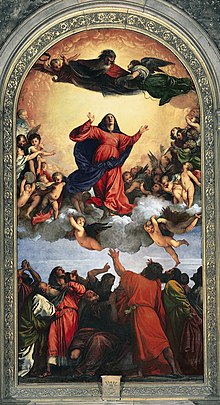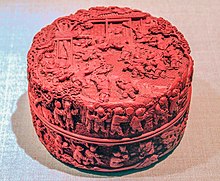Our website is made possible by displaying online advertisements to our visitors.
Please consider supporting us by disabling your ad blocker.
Vermilion
| Vermilion (cinnabar) | |
|---|---|
| Hex triplet | #E34234 |
| sRGBB (r, g, b) | (227, 66, 52) |
| HSV (h, s, v) | (5°, 77%, 89%) |
| CIELChuv (L, C, h) | (52, 130, 14°) |
| Source | Maerz and Paul[note 1] |
| ISCC–NBS descriptor | Vivid reddish orange |
| B: Normalized to [0–255] (byte) | |


Vermilion (sometimes vermillion)[1] is a color family and pigment most often used between antiquity and the 19th century from the powdered mineral cinnabar (a form of mercury sulfide). It is synonymous with red orange, which often takes a modern form, but is 11% brighter (at full brightness).[contradictory]
Cite error: There are <ref group=note> tags on this page, but the references will not show without a {{reflist|group=note}} template (see the help page).
- ^ "Vermilion". Merriam-Webster. 21 May 2018. Retrieved 2018-06-16.
Previous Page Next Page


